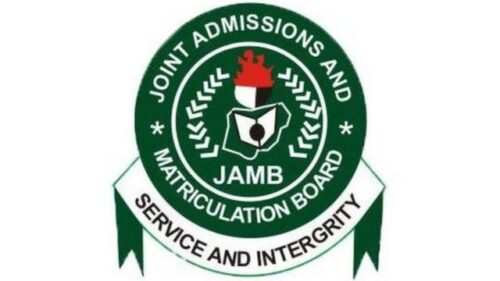How to Secure a U.S. Student Visa for International Students. For many international students, gaining admission to a U.S. institution is only the beginning. The next—and perhaps most critical—milestone is securing a student visa.
Without it, even the most prestigious offer of admission cannot be acted upon. Understanding the visa process, and preparing accordingly, can make the difference between beginning your studies on time or facing costly delays.

This guide provides a step-by-step breakdown of the U.S. student visa process for international applicants, demystifying procedures and highlighting common pitfalls to avoid.
Understanding the Visa Types
The F-1 visa is the most commonly issued student visa and applies to those intending to study full-time at accredited academic institutions in the U.S., including universities, colleges, high schools, seminaries, conservatories, and approved language training programs.
The M-1 visa, on the other hand, is designated for students enrolled in non-academic or vocational study.
This article focuses on the F-1 visa, which applies to the majority of international degree-seeking students.
Step 1: Obtain an I-20 Form from a SEVP-certified institution
Before applying for a visa, a student must first be accepted by a U.S. institution that is certified by the Student and Exchange Visitor Program (SEVP). Upon acceptance, the institution will issue a Form I-20, a Certificate of Eligibility for Nonimmigrant Student Status.
The I-20 form contains critical information including the student’s SEVIS identification number, program of study, start date, and the estimated cost of attendance.
Key requirement: Ensure all personal details on the I-20 form exactly match those in your passport. Discrepancies can result in delays or rejection.
Step 2: Pay the SEVIS I-901 Fee
The SEVIS (Student and Exchange Visitor Information System) fee is required to support the system used by U.S. authorities to monitor students throughout their stay.
- Fee amount for F-1 visa applicants: $350
- Pay online at: www.fmjfee.com
- Ensure you print and retain the payment confirmation—it must be presented during your visa interview.
This payment should be made at least 3 days before submitting the visa application form.
Step 3: Complete the DS-160 Form
The DS-160 is the nonimmigrant visa application form, available exclusively online. This form captures a wide range of personal information, including your academic history, travel plans, family background, and funding sources.
- Access the form at: ceac.state.gov
- A digital passport photograph is required
- Ensure all information is accurate and consistent with your I-20 and other documents
- After submission, print the DS-160 confirmation page with the barcode—this is required for the interview.
Step 4: Pay the Visa Application Fee and Schedule Your Interview
The next step is to pay the non-refundable visa application fee, which is currently $185 in most countries. Payments are typically made online or through designated banks, depending on your local U.S. Embassy or Consulate.
After payment, you can schedule your visa interview via the U.S. embassy’s website in your home country. Be mindful that interview appointment wait times vary significantly depending on location and season, with longer queues during peak academic cycles (May to August).
Step 5: Prepare Required Documents for the Visa Interview
Thorough preparation is essential. The following documents are typically required at the interview:
- Valid Passport – Must be valid for at least six months beyond your intended stay in the U.S.
- DS-160 Confirmation Page
- I-20 Form signed by you and the school official
- SEVIS Fee Payment Receipt
- Visa Appointment Confirmation
- Academic Documents – Transcripts, certificates, test scores (e.g., TOEFL, IELTS, SAT, GRE)
- Proof of Financial Support – Bank statements, loan letters, scholarship letters, or sponsor affidavits showing you can cover tuition and living expenses
- Evidence of Ties to Your Home Country – These can include property ownership documents, letters from employers, or other indicators that you plan to return home after your studies
It’s also advisable to carry passport-sized photographs that meet U.S. visa photo requirements in case digital uploads are rejected.
Step 6: Attend the Visa Interview
A consular officer typically conducts interviews at your local U.S. embassy or consulate. The officer will assess your academic intent, financial capacity, and ties to your home country to determine your eligibility.
Expect questions such as:
- Why did you choose this school?
- Who is funding your education?
- What are your plans after graduation?
- Have you traveled to the U.S. before?
Important note: The interview is not a casual conversation—it’s a formal assessment. Be honest, direct, and avoid over-explaining.
Most interviews are brief, lasting between 3 to 10 minutes.
Step 7: Visa Decision and Passport Collection
If approved, the officer will retain your passport and inform you when to expect it back—typically within 5 to 10 business days. It will arrive with the visa stamped inside.
If denied, the consular officer is required to inform you of the reason, usually linked to:
- Section 214(b): Failure to prove strong ties to home country
- Section 221(g): Missing documents or need for administrative processing
Rejections are not permanent. Applicants can reapply after addressing the specific grounds for denial.
Step 8: Travel to the U.S.
Once your visa is issued, you may enter the U.S. no earlier than 30 days before the program start date on your I-20 form. Upon arrival, present your documents to the Customs and Border Protection (CBP) officer, who may ask further questions about your studies.
Final Recommendations
Do:
- Start the visa process immediately after receiving your I-20
- Keep digital and physical copies of every document
- Read guidelines on the U.S. embassy website in your country
- Prepare for your interview with a mentor, consultant, or advisor
Avoid:
- Providing false or inconsistent information
- Overstating your post-graduation plans (e.g., “I want to work and stay in the U.S.”)
- Relying on agents who promise guaranteed visa approvals
In Conclusion
Securing a U.S. student visa is not just about ticking boxes. It’s about proving—credibly and confidently—that you are a genuine student, financially ready, and committed to returning home after your studies. While the process can be tedious, the structure exists to ensure that those who qualify are granted the opportunity.
International students make a significant contribution to the U.S. education system, and with adequate preparation, the visa process can serve as a gateway to a life-changing academic journey.







